THE CHOIR TRAINERS TOOLKIT
THE SINGERS TOOLKIT
Background Reading
Keys
Most music written between 1600 and 1900 (and an awful lot either side of those years) is written in keys.
These are described as major or minor which (very roughly) equate to happy and sad. Each key has a Tonic (home note or key note) on which a melody or piece seems most complete. Here are three short melodies. The first two don't end on the tonic, and the last does. You will notice that the last
seems most finished.
Incomplete,
Incomplete,
Complete.
RETURN TO:
TOP
MENU - Choir Trainer's Toolkit
MENU - Organists Online
Major Keys
Major and minor keys which are closely related are said to be relative to each other.
You can work out the key of a piece from the collection of accidentals (sharps or flats) grouped at the beginning of each stave: the key signature.
(If you are not completely confident with staves, accidentals, sharps and flats, it could be very useful to have a look round HERE and HERE.)
For MAJOR key signatures in sharps (#), you can look at the last sharp, and move up ONE step (a 2nd) for the key-note or tonic. [Why is one step a 2nd? - see HERE.]
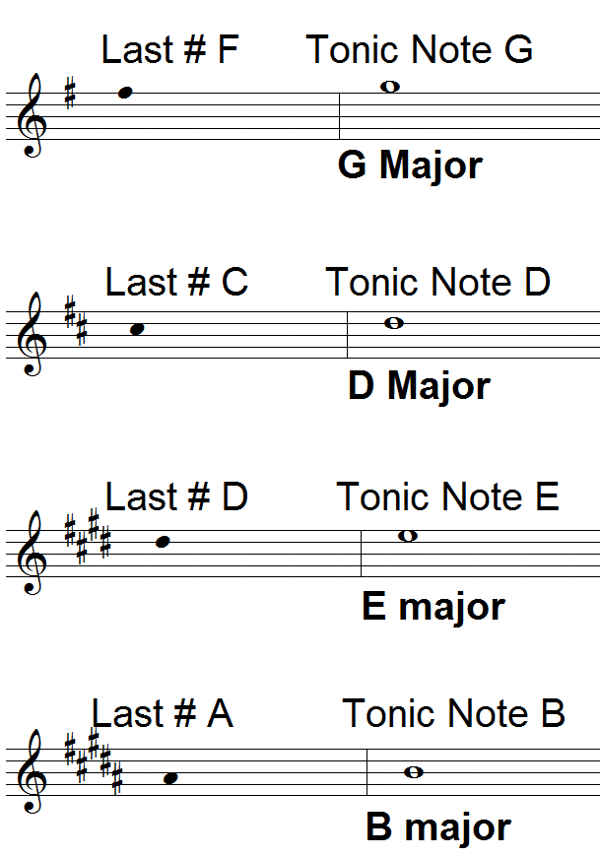 For MAJOR key signatures in flats (b), you can look at the last flat, and move down
THREE steps (a 4th) for the key-note or tonic. [Why are three steps a 4th? - see HERE].
For MAJOR key signatures in flats (b), you can look at the last flat, and move down
THREE steps (a 4th) for the key-note or tonic. [Why are three steps a 4th? - see HERE].
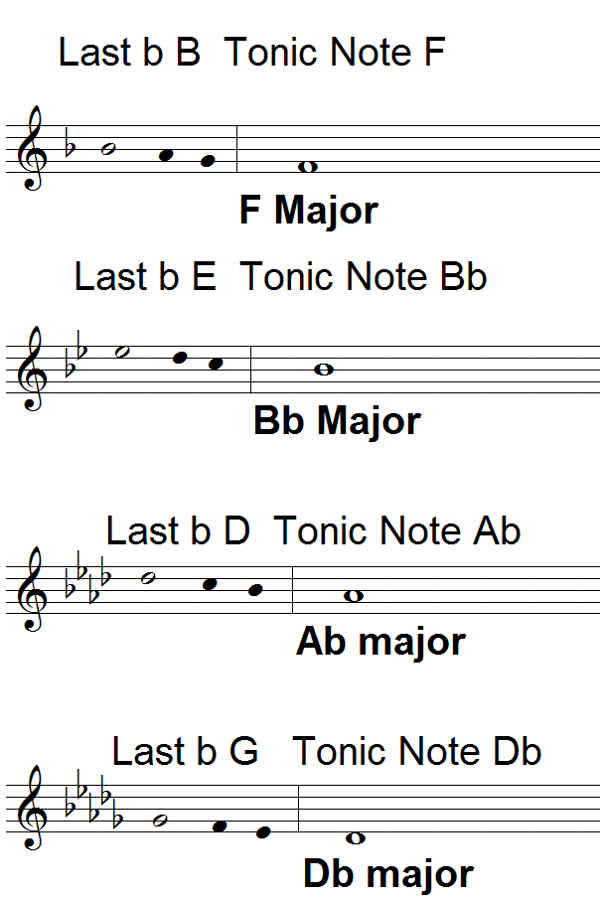
Key signatures DO NOT mix sharps and flats.
!!!SPECIAL CASE!!!
When there is NO key signature, the major key is C Major.
RETURN TO:
TOP
MENU - Choir Trainer's Toolkit
MENU - Organists Online
Minor Keys
As mentioned above, major and minor keys which are closely related are said to be relative. These relative major/minor pairings share the same key signature.
To identify any minor key signature, just move TWO steps (a 3rd) DOWN from its relative major.
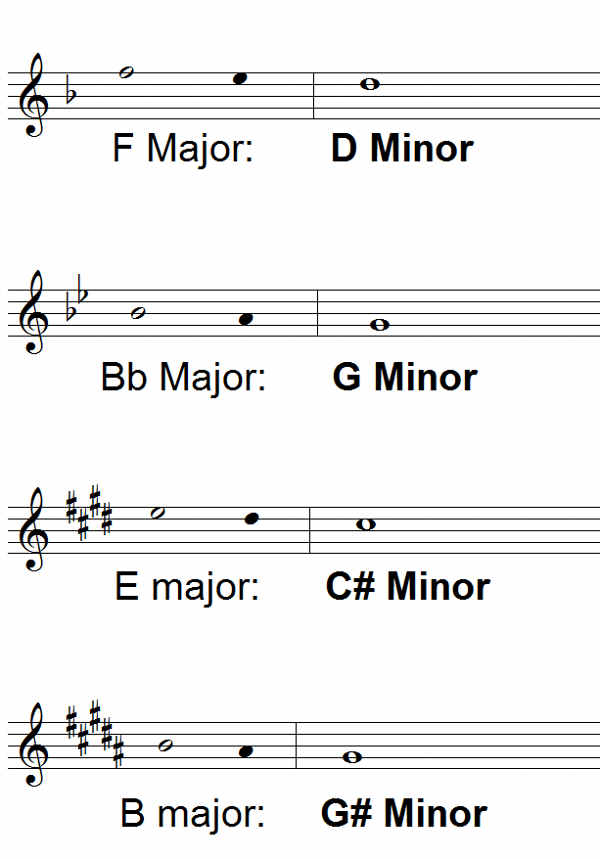
RETURN TO:
TOP
MENU - Choir Trainer's Toolkit
MENU - Organists Online
Minor or Major?
The easiest way to tell if a piece is in a major key or its relative minor is to look at the last bass note. This is VERY LIKELY to be the tonic or key note:
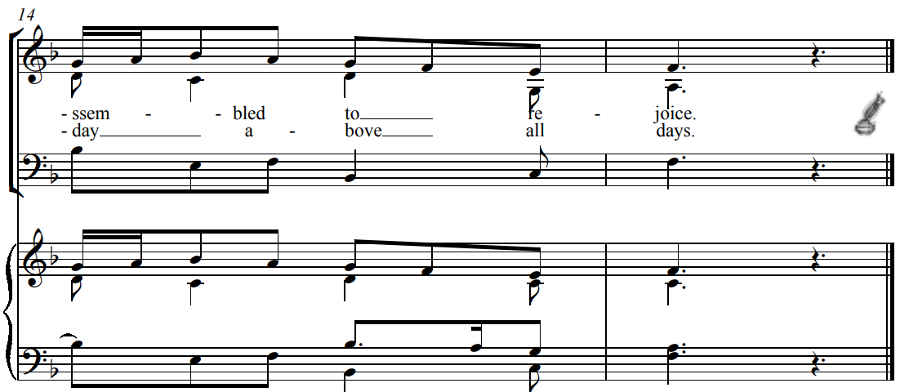 The key signature says F major or D minor, but the last bass note is F, so the key is F major.
The key signature says F major or D minor, but the last bass note is F, so the key is F major.
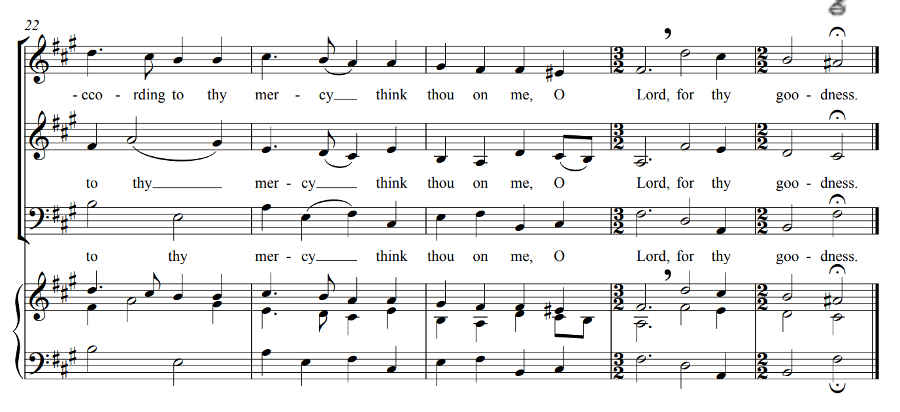 The key signature says A major or F# minor, but the last bass note is F#, so the key is F# minor.
The key signature says A major or F# minor, but the last bass note is F#, so the key is F# minor.
This method is 99% certain, but for nuances and exceptions, please visit HERE.
RETURN TO:
TOP
MENU - Choir Trainer's Toolkit
MENU - Organists Online
Test Yourself
Here are six extracts. See if you can work out the key signature of each piece. Click the buttons below for the answers.
Piece 1
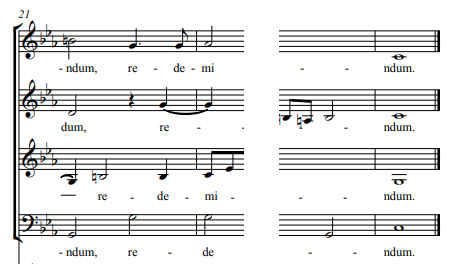
Answer for Piece 1
Why? Piece 1
Piece 2

Answer for Piece 2
Why? Piece 2
Piece 3
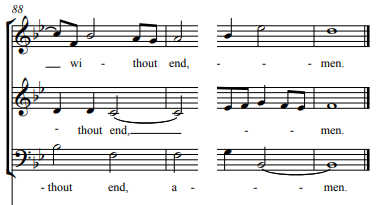
Answer for Piece 3
Why? Piece 3
Piece 4

Answer for Piece 4
Why? Piece 4
Piece 5

Answer for Piece 5
Why? Piece 5
Piece 6
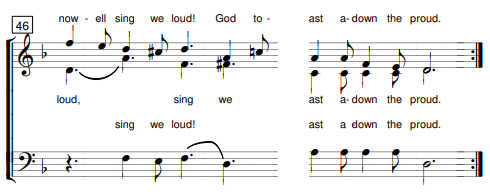
Answer for Piece 6
Why? Piece 6
Writing Key Signatures
Writing key signatures accurately from memory takes a bit of practice so, for reference, here is a list:
Key Signatures in the Treble Clef

Key Signatures in the Bass Clef

For reference, HERE is a downloadable and printable version of the above.
RETURN TO:
TOP
MENU - Choir Trainer's Toolkit
MENU - Organists Online